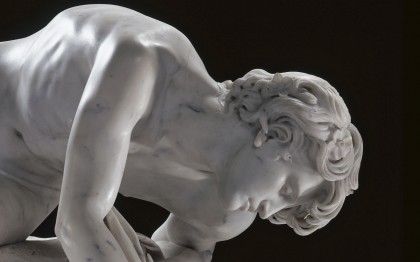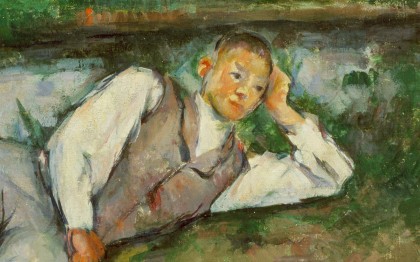The ancient Greek myth of Narcissus, recounted by the Latin poet Ovid has constantly fed artistic tradition. A young man of fascinating beauty, Narcissus fell madly in love with his own reflection which he tried in vain to grasp, to the point of allowing himself to wither away. On his death, he was transformed into a flower found in humid areas which leans its inflorescences towards water, evoking his unhappy passion.
From very early on, this mythological character has been associated with the figure of the artist who admires himself in his own creation, confronted with the quest for inaccessible Beauty. The philosophical interpretation of the 17th century was succeeded in the 18th by a more pictorial vision. The myth became the support for gracious painting in which image took precedence over meaning. The transparency and fragility of a reflection and the androgynous anatomy of the young man created many technical challenges in the context of academic emulation. A tradition began to form, from the Narcissus painted by Nicolas-Bernard Lépicié (1771) to the version sculpted by Ernest Eugène Hiolle (1868).
Beyond the formal and mythological aspects, the figure of the young man at the water’s edge found during the second half of the 19th century a new resurgence through the theme of the reflection which became integral to the new interests of painters, centred on the representation of the ephemeral. Narcissus seems then to incarnate a questioning by the artist of the transitory nature of reality, as shown by Cézanne’s Garçon couché .


